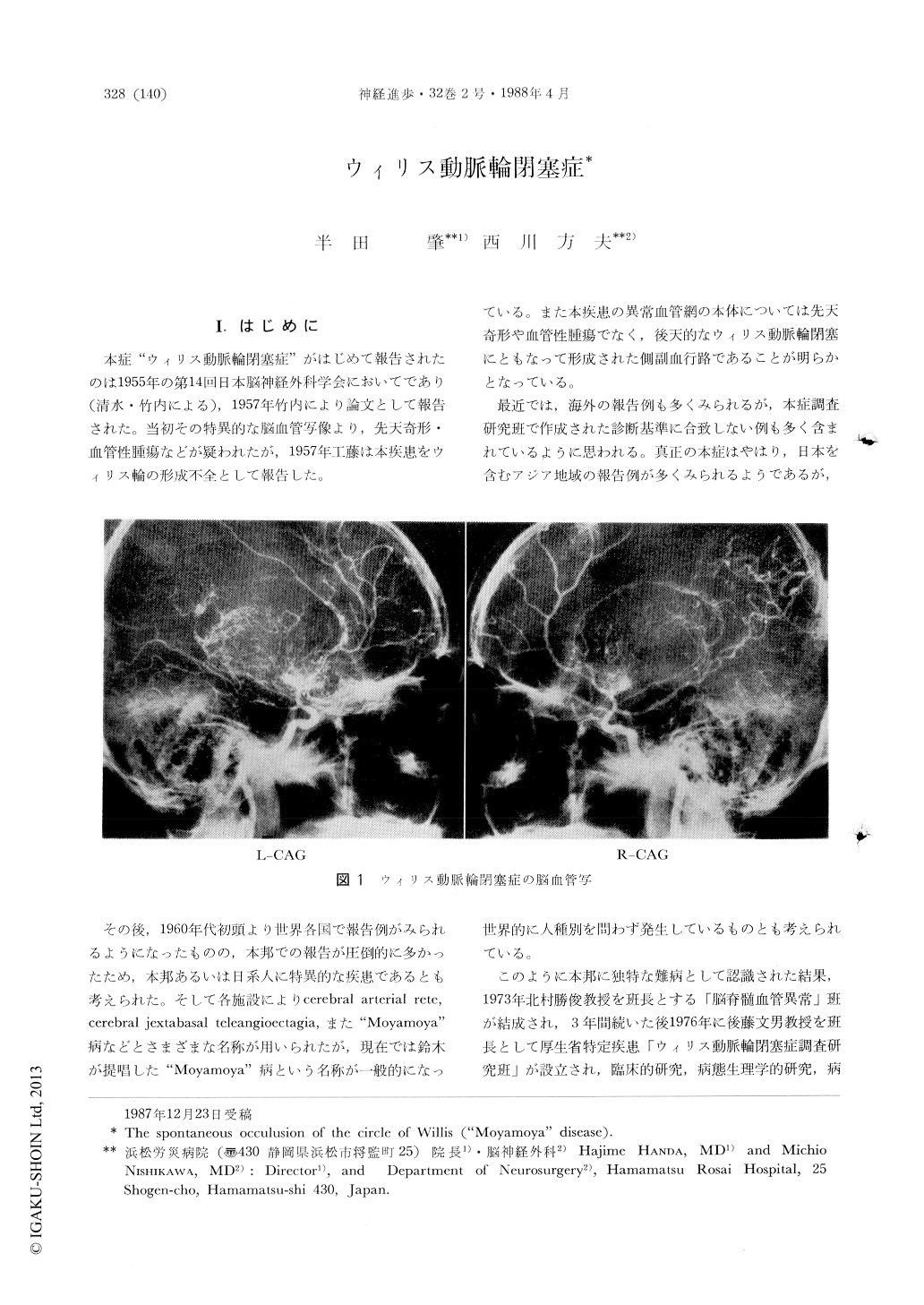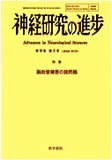Japanese
English
- 有料閲覧
- Abstract 文献概要
- 1ページ目 Look Inside
Ⅰ.はじめに
本症"ウィリス動脈輪閉塞症"がはじめて報告されたのは1955年の第14回日本脳神経外科学会においてであり(清水・竹内による),1957年竹内により論文として報告された。当初その特異的な脳血管写像より,先天奇形・血管性腫瘍などが疑われたが,1957年工藤は本疾患をウィリス輪の形成不全として報告した。
その後,1960年代初頭より世界各国で報告例がみられるようになったものの,本邦での報告が圧倒的に多かったため,本邦あるいは日系人に特異的な疾患であるとも考えられた。そして各施設によりcerebral arterial rete,cerebral jextabasal teleangioectagia,また"Moyamoya"病などとさまざまな名称が用いられたが,現在では鈴木が提唱した"Moyamoya"病という名称が一般的になっている。また本疾患の異常血管網の本体については先天奇形や血管性腫瘍でなく,後天的なウィリス動脈輪閉塞にともなって形成された側副血行路であることが明らかとなっている。
The spontaneous occlusion of the circle of Willis ("Moyamoya" disease) is defined as the appear-ance of small fine vessels in the region of the basal ganglia as the results of stenosis and/or occlusion of the circle of Willis. The cause of these changes in the circle of Willis have been proposed to be due to an infectious change or an auto-immune reaction, but the true pathogenesis of the changes has been still unknown."Moyamoya"vessels are believed to be the collateral routes formed as the results of the changes of the circle of Willis.
Until now about 2,000 patients have been registered in the reserach committee and about one hundred patients appear every year in Japan. Females suffer from more often and over 60% of patients are infants of under 10 years old. They are often attacked with ischemic symptoms and adults with the intracerebral hemorrhage. In over 20% of the patients intelligence lowers, but most patients improve gradually after the attacks.

Copyright © 1988, Igaku-Shoin Ltd. All rights reserved.


